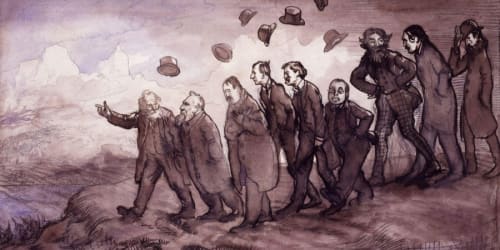Founded by a group of artists dissatisfied with the entrenched attitudes of the Royal Academy, the club embraced the Parisian avant-garde and went on to become the dominant force in British art in the new century.
The group mounted their first show in 1886, at which about fifty artists were represented, including paintings by George Clausen, Fred Brown, Walter Richard Sickert, J.S. Sargent, Wilson Steer and Stanhope Forbes.
And so, the scene was set: the stolid academic approach of the RA as opposed to the dynamic, vibrant observation of the New English - a caricature of course, as are all such comparisons. However, it is remarkable that the artistic descendants of the Impressionists continued to be associated with the New English whilst the RA moved towards a more conceptual approach and towards public gallery orientated work.
During the late 19th and early 20th century the New English grew greatly in influence, and the days of Sickert, Tonks, Steer and Rothenstein and Augustus John were a golden period indeed. In the 1920s Stanley Spencer, Paul Nash, Duncan Grant and Mark Gertler were all members - indeed almost every member of the Camden Town Group started with the New English, and it formed an essential part of their development.
Many of these artists became members of the RA and continued to exhibit with the New English for the rest of their careers. Probably in the 1940s and 1950s the RA and the New English were at their closest point. At this time some painters saw the New English as a 'staging post' to membership of the Academy.
Find out more in Kenneth McConkey's book, The New English.

